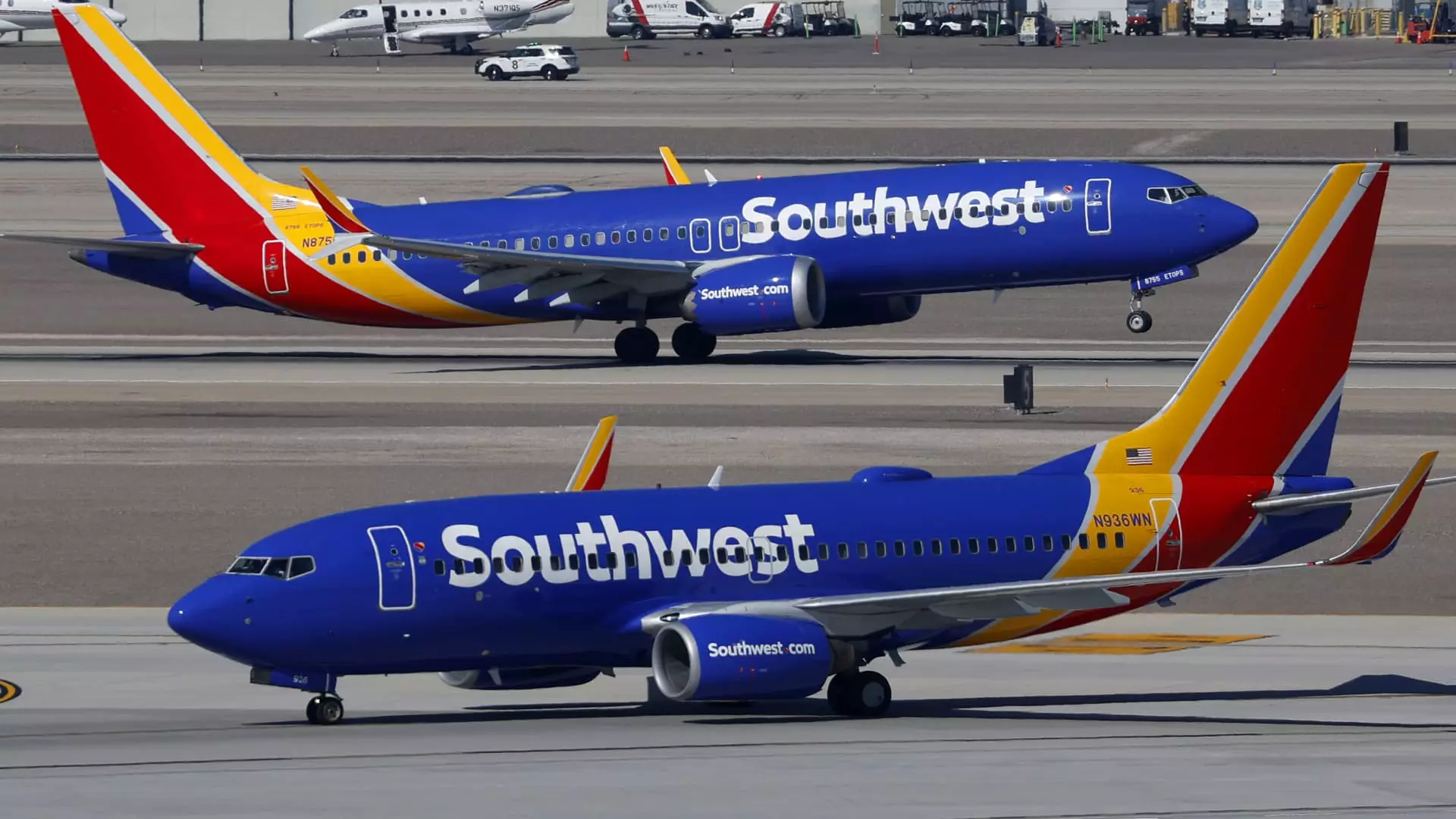For over half a century, Southwest Airlines has championed a culture of independence and simplicity through its open seating policy. This approach allowed passengers to choose their seats upon boarding, fostering a relaxed, almost communal atmosphere that set it apart from more rigid competitors. However, in a move that marks a dramatic shift in its identity, Southwest is phasing out this tradition. Starting January 27, travelers will be assigned seats, fundamentally altering the airline’s core philosophy. This decision isn’t just about logistics or efficiency; it’s a calculated gamble to modernize and increase profitability amidst fierce industry competition. Yet, it raises a profound question: at what expense does this transformation come?
Southwest’s commitment to open seating was more than a convenience—it was a brand differentiator rooted in the notion of freedom and simplicity. For generations, passengers flocked to Southwest specifically for its no-fuss boarding system, where they could arrive early, secure a preferred spot, and enjoy a sense of control. Its reputation for free checked bags further empowered travelers by removing ancillary fees. Now, both its baggage policy and boarding system are changing—clear signs that Southwest is tailoring its business model toward a more revenue-driven, conventional airline approach. These shifts don’t appear to aim solely at boosting short-term profits; they seem designed to reshape the airline’s identity into something more aligned with industry norms—something that risks alienating its loyal customer base.
The Rationale Behind the Change: A Calculated Business Move
Southwest’s leaders are acutely aware of the competitive landscape. The airline’s decision to implement assigned seating and introduce fees for checked bags is driven by a clear financial imperative—facing more profitable rivals, Southwest needs new revenue streams to stay afloat. Their projection of an $800 million boost in earnings before interest and taxes this year, escalating to $1.7 billion by 2026, underscores this strategic pivot. The company has done its homework, using sophisticated modeling and real-world testing to ensure these reforms won’t compromise turnaround times or onboard efficiency. The priority is clear: aligning the boarding process with revenue maximization.
Yet, this rationalization comes with a hefty trade-off. By abandoning their legacy open seating policy, Southwest risks creating a disconnect between its brand promise and customer experience. The airline prided itself on simplicity, affordability, and a laid-back atmosphere—traits that endeared it to budget-conscious travelers and loyal frequent flyers alike. Moving toward a structured, tiered boarding system reminiscent of traditional carriers subtly signals a departure from this identity. It’s less about customer convenience and more about squeezing every dollar from every passenger—a move that might serve short-term financial goals but could undermine goodwill and brand loyalty.
Implications for Customers and the Future of Southwest
The new boarding process introduces eight groups, prioritized based on loyalty status, fare class, and seat selection. Top-tier customers and elite members will board first, securing access to preferred seats and extra legroom. The rest will be segmented into subsequent groups, with seat assignments potentially added as extra fees on top of regular fares. While Southwest has not disclosed exact pricing, industry trends suggest ancillary fees could become a significant revenue generator—yet another departure from their once-cost-effective model.
This transition raises critical questions about customer experience. For families, the signature arrangement of sitting together may become more akin to a lottery, managed through optional seat purchases rather than spontaneous choices. While the airline emphasizes that premium customers will still have options to select seats, the overall experience shifts from one of freedom to one of negotiation and additional expense. This may not matter much to frequent travelers seeking convenience and comfort, but it risks alienating a core demographic that appreciated Southwest’s straightforward, no-hassle approach.
Moreover, the reconfiguration of aircraft to include extra-legroom seats underscores a broader trend: that profitability now hinges on premium offerings rather than economy simplicity. As the airline sells early boarding and tiered seats, it signals a strategic pivot toward a more segmented, revenue-sensitive model—one that could dilute the egalitarian ethos Southwest once championed. Whether this will translate into sustained financial success or erode the brand’s authenticity remains an open question.
Southwest’s decision to shift from open seating to assigned seats, coupled with new baggage and fare policies, vividly exemplifies the tension between tradition and profitability. Whether this gamble will secure its future or consign its historic identity to the past is a story yet to be written. What is certain, however, is that in the relentless pursuit of growth, Southwest risks sacrificing its soul for short-term gains, and only time will tell if passengers will accept this transformed airline’s new face.

